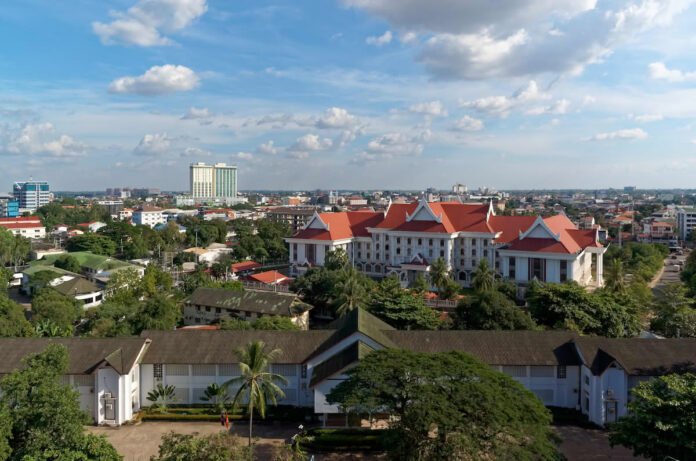Cambodia’s health insurance landscape is in a transitional phase, aiming to expand public health protection while accommodating a growing but limited private insurance market. Both public and private health insurance schemes play critical roles in increasing healthcare access, but they differ significantly in structure, target populations, and services offered.
Differences
- Target Population
Public health insurance in Cambodia, including schemes like the National Social Security Fund (NSSF) and Community-Based Health Insurance (CBHI), primarily targets formal sector employees, informal workers, and the poor. For instance, NSSF mandates coverage for formal sector workers, while CBHI aims at self-employed or rural populations. In contrast, private insurance caters to expatriates, high-income earners, and corporate clients, offering more flexibility and broader service networks. - Funding and Affordability
Public schemes are subsidized by the government, employers, and international donors. Programs like the Health Equity Fund (HEF) offer free care to the poor, and user fees at public hospitals are subsidized. Private health insurance, such as plans from Manulife Cambodia or Bupa Global, requires out-of-pocket premium payments, which vary depending on coverage level and individual risk factors. - Scope of Coverage
Public health insurance generally covers essential services like primary care, maternal health, and inpatient services through public hospitals and clinics. However, service quality and infrastructure are still developing. Private insurers provide comprehensive and faster services, including private hospital access, specialist consultations, and international coverage, making them attractive to those seeking more personalized care. - Service Delivery and Quality
Public services often involve longer wait times and more limited infrastructure, especially in rural areas. Private insurers partner with private hospitals and international clinics, offering shorter wait times, multilingual staff, and better amenities, which appeal to expats and medical tourists. - Regulation and Development
Public insurance schemes are driven by the Ministry of Health and are guided by strategic plans like the UHC Roadmap 2024–2035. In contrast, the private market is less regulated and still emerging, with only a few players like FWD Cambodia and Asia Insurance operating.
Similarities
- Contribution to Universal Health Coverage (UHC)
Both sectors contribute to UHC goals—public schemes focus on breadth of coverage (especially the poor and rural populations), while private insurance enhances depth and service quality. Together, they form a dual system aiming to reduce the national out-of-pocket health expenditure, which remains high. - Efforts Toward Integration and Digitalization
There is growing convergence in using digital tools for enrollment, claims processing, and data management. Both public and private sectors are adopting electronic health records and telemedicine, especially post-COVID. - Preventive and Outpatient Care Emphasis
Both types of insurance are expanding beyond just hospitalization. Public schemes like CBHI and private ones like Manulife are increasingly including preventive services, outpatient care, and wellness checks to control costs and improve population health.
Top 5 Public Health Insurance Schemes in Cambodia
Cambodia’s journey toward Universal Health Coverage (UHC) by 2035 is supported by a range of public health insurance schemes that target different segments of the population. These schemes aim to improve access, reduce out-of-pocket (OOP) payments, and ensure financial protection for Cambodians, especially the poor and those in the informal sector. Below are the five main public health insurance initiatives in Cambodia, their costs, features, coverage scope, and consumer reception.
1. National Social Security Fund (NSSF) – Health Insurance Branch(Official website: https://www.nssf.gov.kh)
- Coverage & Availability: Mandatory for formal sector workers and their dependents.
- Services: Covers preventive care, outpatient and inpatient treatments, maternal health, and occupational accident benefits.
- Eligibility: Open to employees of registered businesses across Cambodia.
- Cost & Financing: Funded by employer contributions (2.6% of salary), with no employee contribution required.
- Financial Features: Cashless access to a network of public hospitals and contracted private clinics.
- Consumer Satisfaction: High among urban formal workers, though limited choice of providers is a concern in rural areas.
2. Community-Based Health Insurance (CBHI)
- Coverage & Availability: Voluntary scheme targeting informal sector workers, especially in rural and semi-urban communities.
- Services: Includes basic outpatient and inpatient services, essential medicines, and some preventive interventions.
- Eligibility: Open to all informal workers and self-employed individuals who are not covered under NSSF.
- Cost & Financing: Low-cost premiums (~$5–$10/year), often subsidized by NGOs or local authorities.
- Financial Features: Offers significant reduction in OOP expenses at registered public health facilities.
- Consumer Satisfaction: Moderate—praised for affordability and inclusion but criticized for limited coverage and provider quality.
3. Health Equity Fund (HEF)
- Coverage & Availability: Designed to provide free access to healthcare for the poorest segments of society.
- Services: Covers all user fees for outpatient and inpatient services at public health facilities.
- Eligibility: Targeted at those officially identified as poor via the IDPoor system.
- Cost & Financing: Fully subsidized by the Cambodian government and development partners such as GIZ and USAID.
- Financial Features: Eliminates financial barriers by reimbursing facilities directly.
- Consumer Satisfaction: High in urban areas with good facility access; rural users report gaps in quality and availability.
4. Ministry of Health Public Health System(Official website: http://moh.gov.kh)
- Coverage & Availability: Universal public access to over 1,200 health centers and hospitals.
- Services: Provides essential health services, maternal and child care, vaccinations, and infectious disease control.
- Eligibility: Open to all citizens regardless of insurance status.
- Cost & Financing: Subsidized or free services, depending on the facility and patient classification.
- Financial Features: Heavily reliant on donor funding and government budget allocations.
- Consumer Satisfaction: Mixed—while affordability is a strength, perceived quality of care and infrastructure remains a concern.
5. Social Health Insurance Master Plan (In Development)
- Coverage & Availability: A strategic blueprint for unifying and expanding all social health protection schemes to cover 80% of the population by 2030.
- Services: Aims to offer integrated coverage that includes NSSF, CBHI, and HEF services under one umbrella.
- Eligibility: Will target universal coverage with segmented schemes for different population groups.
- Cost & Financing: Multisource financing including taxes, donor support, and premiums.
- Financial Features: Focus on reducing OOP expenditure from 60% to 35% of total health spending.
- Consumer Satisfaction: Not yet rated—still in development phase but viewed positively for its inclusive goals.
Top 5 Private Health Insurance Providers in Cambodia
While Cambodia’s public health insurance system continues to evolve, the private health insurance sector has emerged as a growing alternative, especially for expatriates, upper-middle-class locals, and corporate clients seeking broader access, faster service, and international coverage. Below are the top five private health insurers operating in Cambodia, highlighting their coverage features, cost structures, eligibility criteria, financial terms, and consumer satisfaction.
1. Cambodia Life Insurance(Official website: https://www.cli.com.kh)
- Coverage & Services: Offers a variety of health and life insurance bundles tailored to local clients. Plans include hospitalization, outpatient care, surgical procedures, and limited critical illness coverage.
- Eligibility: Open to Cambodian nationals and residents, including corporate clients.
- Cost: Premiums start from approximately $150–$250 per year for basic plans; higher-tier packages vary depending on age and coverage.
- Core Financial Features: Direct billing available at selected partner hospitals and clinics; includes reimbursement models for out-of-network services.
- Consumer Satisfaction: Moderate to high; praised for affordability and localized support, but limited in global portability and hospital choice.
2. Asia Insurance (Cambodia) Plc(Official website: https://www.asiainsurance.com.kh)
- Coverage & Services: Provides inpatient, outpatient, surgical, and accident coverage, often bundled with life insurance. Customizable plans available for individuals and businesses.
- Eligibility: Open to individuals, families, and corporations residing in Cambodia.
- Cost: Plans typically range from $200 to $500 per year depending on age, health status, and coverage level.
- Core Financial Features: Offers reimbursement-based and some direct billing options; deductibles and co-payments apply depending on the plan.
- Consumer Satisfaction: Generally high; users appreciate customer service responsiveness and access to private healthcare facilities.
3. FWD Cambodia(Official website: https://www.fwd.com.kh)
- Coverage & Services: Offers modular health insurance products including inpatient, maternity, critical illness, and accidental injury. Strong digital claims interface and policy management tools.
- Eligibility: Open to Cambodian citizens and long-term expats.
- Cost: Premiums start at $300–$600 annually depending on the plan and age bracket.
- Core Financial Features: Flexible payment options, no-claims bonuses, and cashless hospitalization in select facilities.
- Consumer Satisfaction: High; customers value innovation, transparency, and mobile access features.
4. Manulife Cambodia(Official website: https://www.manulife.com.kh)
- Coverage & Services: Specializes in health and life insurance for corporate clients, expats, and high-net-worth individuals. Includes hospitalization, cancer cover, and international medical evacuation in some plans.
- Eligibility: Available to Cambodian nationals and expatriates.
- Cost: Mid- to high-tier pricing, with premiums typically starting around $400/year and exceeding $1,000/year for comprehensive plans.
- Core Financial Features: Extensive international network access, multi-currency options, and robust claims service.
- Consumer Satisfaction: Very high among corporate clients; known for stability, global reputation, and comprehensive support.
5. Bupa Global (via Local Partners)(Official website: https://www.bupaglobal.com)
- Coverage & Services: Provides international private medical insurance (IPMI) through regional brokers and partners. Plans include global inpatient and outpatient services, maternity, dental, mental health, and emergency evacuation.
- Eligibility: Targeted at expatriates, high-income Cambodians, and frequent travelers.
- Cost: Premiums start from approximately $2,000/year and vary significantly based on region and coverage depth.
- Core Financial Features: Offers global direct billing network, concierge services, and full coverage in top-tier international hospitals.
- Consumer Satisfaction: Exceptionally high; known for luxury service quality, seamless international support, and fast claims turnaround.
READ MORE: Private and public health insurance of India (Make informed choices)


